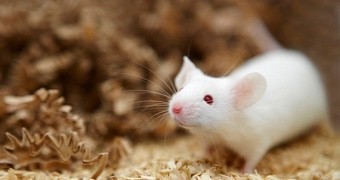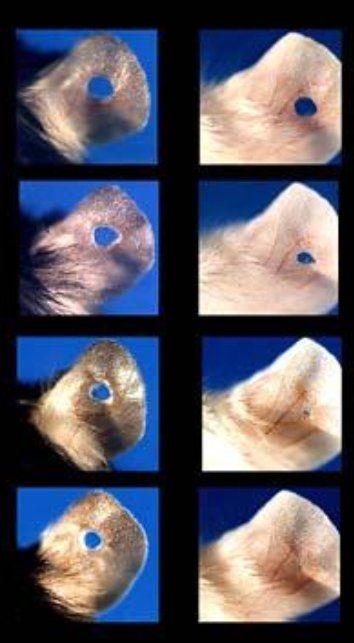A team of scientists led by specialist Ellen Heber-Katz of Main Line Health's Lankenau Institute for Medical Research argue to have demonstrated spontaneous drug-induced tissue regeneration in laboratory mice.
In not so many fancy words, these researchers claim to have found a way to use a specific drug to help wounded mice regrow damaged and even lost tissue.
Their work, presented in a report published earlier this week in the journal Science Translational Medicine, could pave the way for the development of new methods to address injuries and repair wounds in situ.
So, how did they do it?
A couple of decades ago, researcher Ellen Heber-Katz happened to notice that a certain breed of mice used by scientists in laboratory experiments had the unique ability to regenerate and heal holes punched in their ears.
Admittedly, such regenerative capabilities aren't exactly a novelty for the scientific community. Mind you, salamanders, newts and other lower order creatures have been regrowing lost body parts for millennia now.
Still, the fact of the matter is that, until scientist Ellen Heber-Katz' study on so-called MRL (Murphy Roth Large) mice came along, tissue regeneration had never before been documented in mammals. Hence the surprise.
At first, Ellen Keber-Katz and her collaborators had no idea why it was that injured MRL mice could force their body into regenerating damaged and lost tissue. After years of research, however, they believe to have figured it out.
In their latest study in the journal Science Translational Medicine, the scientists say that, having carried out a series of experiments, they zoomed in on a specific protein as the driver behind the MRL mice's healing abilities.
When a drug was used to up the levels of this protein in the body of otherwise perfectly ordinary mice, these rodents too developed the uncanny ability to heal a hole in their ear by regrowing cartilage and even hair follicles.
This could transform medicine
Specialist Ellen Heber-Katz and her team hope that they will one day figure out how to trigger such regenerative processes in other species. Their goal: unlock this ability in humans.
“This remarkable work has vast importance in medicine and surgery and spotlights the diverse and important scientific investigations underway at LIMR,” said George Prendergast, PhD, President and CEO of the Lankenau Institute for Medical Research.
“We are committed to the quest to discover therapies that make healthy tissue regeneration a possibility in humans,” the scientist went on to comment on the importance of this study.

 14 DAY TRIAL //
14 DAY TRIAL // 

